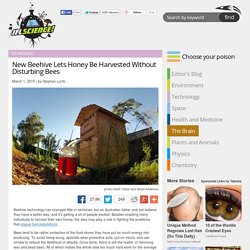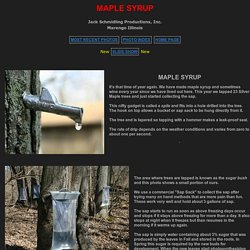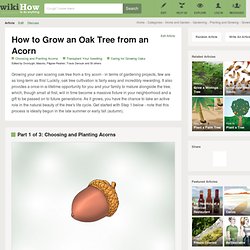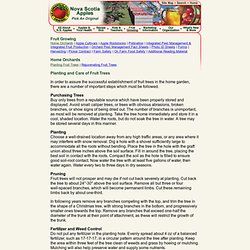

New Beehive Lets Honey Be Harvested Without Disturbing Bees. Beehive technology has changed little in centuries, but an Australian father and son believe they have a better way, and it's getting a lot of people excited.

Besides enabling many individuals to harvest their own honey, the idea may play a role in fighting the problems that plague bee populations. Bees tend to be rather protective of the food stores they have put so much energy into producing. To avoid being stung, apiarists wear protective suits, put on visors, and use smoke to reduce the likelihood of attacks. Once done, there is still the matter of removing wax and dead bees. All of which makes the whole idea too much hard work for the average backyard gardener. Stuart Anderson's family have been keeping bees for generations and when his son Cedar suggested there might be a better way, he was disbelieving at first. The Andersons describe their prototype like this: The Flow frame consists of already partly formed honeycomb cells. Credit: Cedar and Stuart Anderson. MAPLE SYRUM. Jack Schmidling Productions, Inc.

Want more fruit from less space? Espalier your trees! by Rev. J.D. Hooker. After originating in the semi-arid regions of the middle east, espaliering (is-'pal-yer-ing) became a commonly employed fruit tree growing method of the Greco-Roman world.

Later, during the so-called "Dark Ages" after Rome's fall, these techniques were kept alive in isolated monasteries. Once you realize just how minimal the space requirements are, and how productive the results, you'll understand why espaliered fruit trees were so common along the inner walls of castle courtyards and walled cities. Today, these techniques remain just as popular over much of Europe, yet oddly, except among a few high grade landscapers and orchardists, these techniques are rarely used in the U.S. Hugelkultur: the ultimate raised garden beds. How to Build Your Own Worm Composter. 2 of 4 in Series: The Essentials of Worm Composting If you're interested in constructing a home for your composting worms instead of buying one, you can start with this simple double-decker design, which includes a built-in method for harvesting vermicompost.

If you prefer to get your feet wet with just one bin, follow the basic drilling instructions for the double-decker bin, substituting one bin. How to identify and grow oak trees. Two oak trees are native to the UK, the sessile oak (quercus petraea) and the English oak (quercus robur).

But around the world there are approximately 500 species of oak tree. Most are deciduous but some like the Holm (or Holly) Oak (quercus ilex) are evergreen. Click here for our oak tree identification page with lots of pictures and descriptions to assist in identifying specific species. For more information on the Major Oak (pictured top left), one of the most famous oak trees in the world, click here. The leaf shape of the various oak species also differs considerably from the traditional lobe shape to those with a long and narrow shape. Acorns to Oaks: How to Grow Your Own Oak Trees. The historical and economic importance of Iowa's oaks led the General Assembly to name them the state tree in 1961.

But considering how desired oaks are, a landscaping trees it is surprising how infrequently they are planted for that purpose. Partly this is because oaks are slow growing and can take as long as two to three decades before they begin to provide significant shade. But mostly it's because the oaks, with their deep penetrating tap roots, do not fit into the current commercial nursery practice of supplying large caliper (trunk diameter) balled and burlaped or container grown trees for planting. Bur oaks can send a tap root down as deep as five feet in the first year of growth.
If about 95% of a tree's roots are removed when it's moved from the nursery then oaks do not make good candidates for transplanting. We can also grow perfectly good oaks by directly planting acorns. The white oak group includes the white, bur, chinkapin, swamp white, and post oaks. How to Grow an Oak Tree from an Acorn with Step-by-Step Pictures. Edit Article Choosing and Planting AcornsTransplant Your SeedlingCaring for Growing Oaks Edited by Dvortygirl, Maluniu, Filigree Peahen, Travis Derouin and 30 others Growing your own soaring oak tree from a tiny acorn - in terms of gardening projects, few are as long-term as this!

Luckily, oak tree cultivation is fairly easy and incredibly rewarding. It also provides a once-in-a-lifetime opportunity for you and your family to mature alongside the tree, which, though small at first, will in time become a massive fixture in your neighborhood and a gift to be passed on to future generations. Ad Steps. Fruit Tree Nursery. Nova Scotia Apples - Planting and Care of Fruit Trees. Fruit Growing Home Orchards | Apple Cultivars | Apple Rootstocks | Pollination | Integrated Pest Management & Integrated Fruit Production | Orchard Pest Management Fact Sheets | Photo ID Sheets | Forms | Harvesting | Picker Contract | Farm Safety | On Farm Food Safety | Additional Reading Material.
